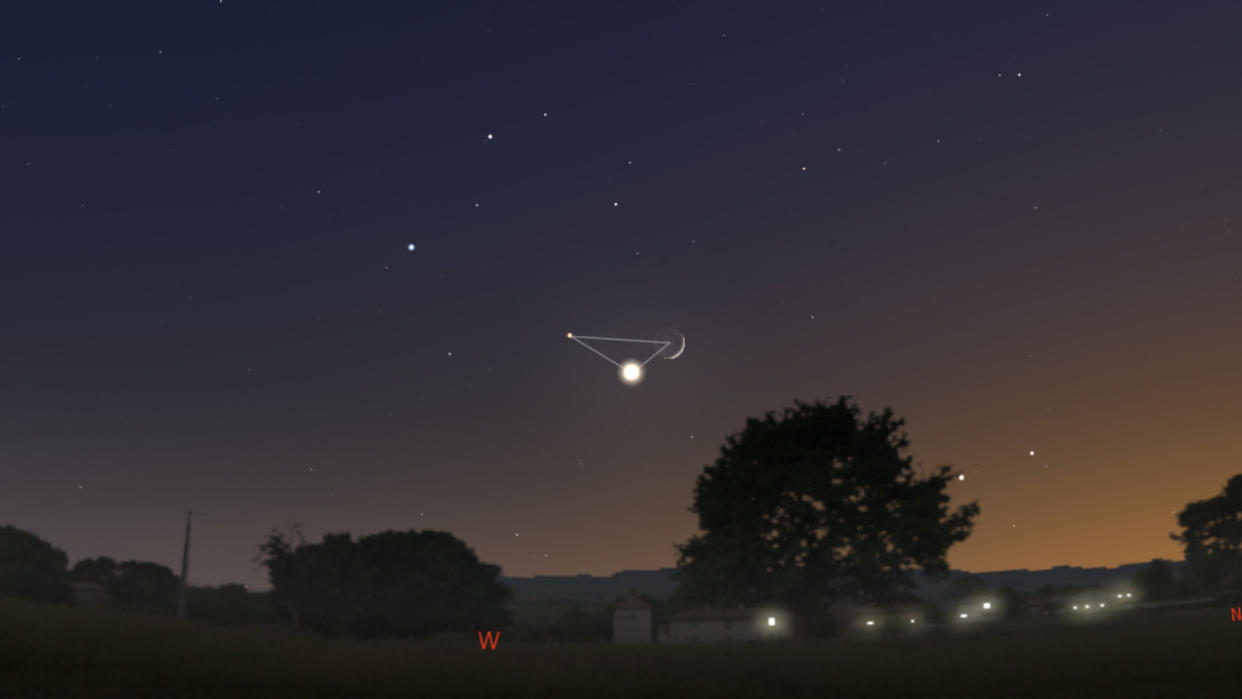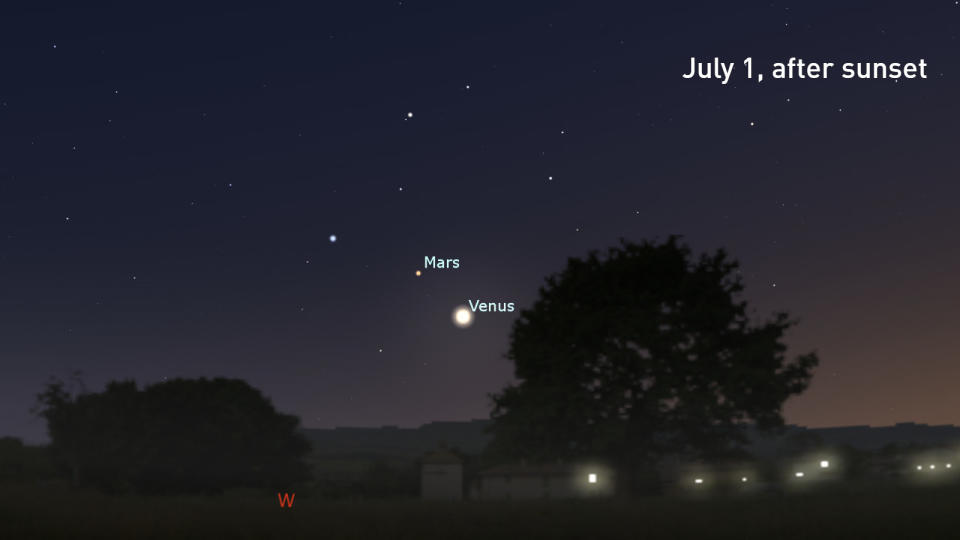Catch an astronomical trio in the sky tonight to celebrate the Summer Solstice

On the first night of summer, three bright objects will form into a special alignment for just a few hours after sunset!
Have you noticed an exceptionally bright point of light each night in the western sky after the Sun has set? That's the planet Venus, shining as the 'evening star', which has been visible in our night skies for much of spring.
Nearby, off to the left of Venus, you may have spotted another consistent point of light, this one dimmer with a distinct orange tint. That is the planet Mars.
These planets will continue to be two of the brightest points of light in our sky as we transition into summer. On the night of Wednesday, June 21, they will be joined by the Crescent Moon to form a triangle above the western horizon.

Venus, Mars, and the Crescent Moon in the western sky just after sunset on Wednesday, June 21. Credit: Stellarium
Venus and the thin Crescent Moon should be bright enough to spot in the sky as the Sun is setting. However, we'll need to wait until a little later in the evening for dimmer Mars to emerge from twilight.
__READ MORE: A super-rare Perigee Blue Moon lights up the night sky this summer
The trio should remain visible until they set, sometime between 11:30 p.m. and midnight local time.
The Moon will 'move on' in the nights following, lining up with the two planets during the evening hours on Thursday and Friday. We'll need to wait until late July for it to form yet another evening triangle with Venus and Mars.
In the meantime, keep an eye on the planetary pair over the next week and a half. Each night, the two will draw closer together until they reach their closest distance in our sky (at least for now) on the night of July 1.

Venus and Mars at their closest distance, after sunset on July 1, 2023. Credit: Stellarium
These two planets will continue to 'hang out' together in the western sky after sunset for the next few weeks until Venus is lost in twilight in late July, and Mars follows in early August.
DON'T MISS: The mystery of our transparent universe has been solved!
(Thumbnail image courtesy the free, open source planetarium software Stellarium, with added details by the author)


